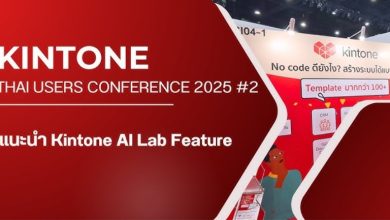Forrester Releases Framework to Help Enterprises Optimise AI Costs
Actionable Recommendations to Help Businesses Manage the Spiraling Costs of Deploying Compute-Intensive, Large-Scale AI Models

With global enterprise spending on generative AI (Artificial Intelligence) expected to surge from USD $2.3 billion in 2023 to USD $13.8 billion in 2024, Forrester has unveiled a new framework to help organisations tackle one of the most urgent challenges of AI adoption: cost optimisation.
In its latest report, “AI Cost Optimisation: The Why, What, and How,” Forrester provides actionable recommendations to help businesses manage the spiraling costs of deploying compute-intensive, large-scale AI models. The research outlines a strategic approach to reduce financial risks, maximize ROI, and ensure long-term sustainability of AI initiatives.
Forrester’s findings reveal that scaling AI beyond proof of concept to production-ready use cases incurs exponential costs. The cost model incorporates essential dimensions such as infrastructure, model lifecycle management, governance, and operational overhead. The research underscores the importance of taking a holistic, systems-wide view to mitigate financial risks and achieve long-term sustainability of AI initiatives.
Key findings from this new research include:
- Enterprises are facing a rapid increase in AI costs, with generative AI spending projected to jump from USD $2.3 billion in 2023 to $13.8 billion in 2024. This highlights the need for cost optimisation strategies.
- Operationalising AI at scale requires substantial investments across infrastructure, data, and model management, continuous monitoring, maintenance, and updates. Understanding the total cost of ownership is essential for making informed decisions.
- AI cost levers can be categorised into direct levers (models, data, infrastructure) and operational levers (governance, business transformation, training). Optimising these levers is key to managing AI costs.
- Data is the biggest lever of model cost, with the scope and scale of data driving up costs. Optimising data sources, quality, and transfer is crucial for cost control.
- AI operations, including governance, business transformation, and training, represent hidden costs that must be accounted for to ensure the success and sustainability of AI initiatives.
Forrester recognises that the future of enterprise AI lies in its ability to integrate seamlessly into business operations while delivering a measurable return on investment. By defining a robust financial framework tailored to AI initiatives and aligning costs with business priorities, organisations can create a virtuous cycle of cost-effectiveness and innovation.
Forrester VP and Principal Analyst Michele Goetz said: “As generative AI embeds itself into every layer of enterprise operations, organisations must grapple with escalating costs amidst increasing demand. Forrester’s framework equips leaders with the tools to optimise spend, manage risks, and strategically align their AI cost models with their business objectives.”
“In Asia Pacific, organisations are navigating unique opportunities and challenges in adopting generative and agentic AI,” said Charlie Dai, VP and Principal Analyst at Forrester. “To unlock the full potential of AI while managing costs effectively, leaders must prioritise local market dynamics, such as data sovereignty, regulatory compliance, and talent development. By aligning these factors with strategic, cost-conscious investments, APAC enterprises can drive innovation while ensuring long-term operational effectiveness and business resilience.”




